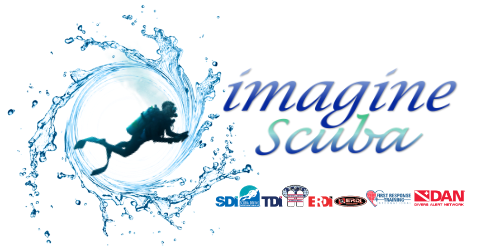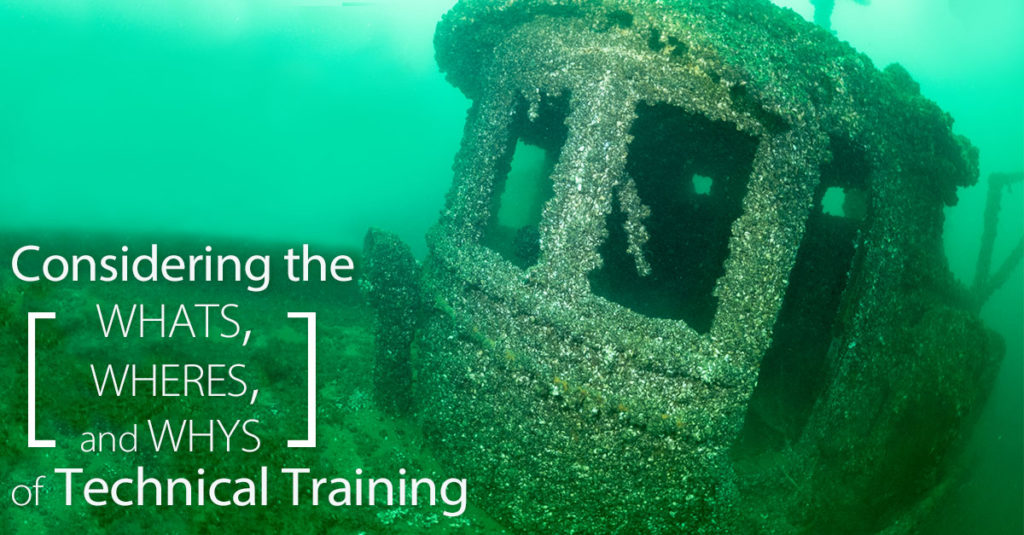Patience is a virtue. In diving, patience is the difference between calmly addressing an issue and safely moving on or panicking and causing a domino of problems to fall. This is obvious in the water, but it is also true with regard to how we approach training as an instructor and as a student. I have recently read many great articles on the need for divers to have patience when it comes to training and progression. The temptation and prevalence of “zero to hero” is probably more of a reality than many of us admit to or realize. One article even suggested a minimum of 50 dives in between courses. Definitely not a bad idea!
It’s more than just numbers
It is difficult to argue that there isn’t a need to be patient with one’s training in order to safely and confidently progress with the skill sets necessary for dives that will continuously demand more, while providing less room for error. To this conversation, I would also like to add three components of consideration that are equally — if not more — important than the number of dives a person has accumulated. As an instructor, these components make up the first conversation I have when a prospective tech student approaches me about training; I ask them (what I like to call) the whats, wheres, and whys of technical training enrollment.
What type of diving?
What? What type of diving has the student been doing and what type of diving do they ultimately want to do? Often times, the type of diving my prospective students want to do is very different from the type of diving they have been doing. Prerequisites should really be as much about the type of diving as it is about the number of dives. In too many cases, instructors tend to understand this better than the students. There needs to be some understanding that in order to appropriately address skills for any given course, students need to have experiences that couple the amount of diving with the skills required for the type of diving they are seeking to do.
For example, a student who wishes to begin diving doubles with accelerated decompression as a path to dive shipwrecks in the Great Lakes, but has only been diving in warm water, may not be as ready to handle a technical course designed for cold water exploration, even if they have racked up over 500 dives.
As instructors, we have to look beyond the numbers. Has the student executed 500 dives or one dive 500 times? I definitely don’t encourage students to become “bobbers” as a means of meeting a prerequisite. Likewise, a student who has over a hundred dives and has been on dozens of wrecks in the five Great Lakes, at varying depths and in an array of conditions, should be a much stronger candidate for said course, even if their log book is only on page 250. So, although the quantity of dives matters as a prerequisite, the number is really only part of the equation. Instructors and students must be willing to have a conversation and determine whether the answers to the what really qualify a student for enrollment in a given course.
Students should interview their Instructor
Moreover, students should also be asking their potential instructors what type of diving they specialize in. I know for myself that I am extremely comfortable in the Great Lakes. I also recognize that the Great Lakes are perhaps the most unforgiving bodies of water in the world and the margin for error on a technical dive is very thin. I am comfortable making decisions about when and when not to progress. These decision-making processes will inevitably become part of my students’ skill set and the attitude they see will work its way into the milieu of their own decision making. I am not an expert in East Coast wreck diving and when I travel to these excursions, I rely heavily on the expertise of the divers familiar with the sites and conditions that we are entering. When I sit down with a prospective student, I explain these differences to ensure that our instructional approach, goals, and outcomes are the same. If there is no alignment of these areas, then we are most likely doing a disservice to one another.
Where are you diving?
Where? Where has the student been diving and where do they want to dive? A student may have logged over 1000 dives, but if they are all warm-water, shore dives, they may not possess the skill set necessary for deep, cold-water diving, cave or wreck penetration, low visibility, or conditions that may require, among other things, a willingness/capability to calmly remove and replace a mask in 37-degree water.
Safe technical diving and associated training have as much to do with the environment in which configurations and procedures exist as they do with set-up and protocols. I would not have wanted to train for a lost mask drill in the Caribbean only to have to execute it on the bottom of Lake Huron in an emergency situation. Environments add nuance to procedures that must be experienced if they are to be safely executed.
One of the biggest issues I face as an instructor in this area is helping new students understand how much gas usage varies based on conditions and equipment. And this probably has more to do with ego or bravado than anything else. Every warm-water first diver I have taught, very comfortably comes into class with a .5 rmv and will almost assuredly underestimate the amount that will change as soon as multiple tanks, stage bottles, an inflator bottle, drysuit, and cold, deep, dark water are thrown into the mix.
Where we dive matters. And to assume that the skills we have developed in one place are completely transferable to another place is not only a mistake but something that should be given strong consideration before deciding if one is ready for the next-level or if their intended next-level is a good fit.
Why do you want this training?
Why? Why does the student wish to pursue additional training? Do they have a clearly defined goal? Are they simply looking to get more comfortable in the water? Are they in a hurry to complete certifications so that they can do more demanding dives? When I talk to a student about training, I want them to have an endgame in mind. If their goal is to dive the deeper wrecks of the Great Lakes, then we need to spend time discussing the relevant nuances. If their goal is to become comfortable in doubles so that they can pursue Florida cave diving, then I may recommend that they work with a colleague who does that type of diving. We all know that the quality of instruction and the cohesiveness of the team is fundamental to safe diving education and practice. This should also be a priority and emphasis of the student/instructor dynamic.
Not all students and instructors are good fits, not because either is lacking skill or knowledge per say, but because the what, where, and why may not align. From a business standpoint, it is tempting to take on any student that walks through the door, but from a practical standpoint, it is better to recognize that not all instructors can provide what every student needs. Moreover, not every student is ready, regardless of the number of dives, for the next step in the progression. Hopefully, an honest exploration of the whats, wheres, and whys of continuing ed can help both sides create the honest environment that the safety and future of technical diving depends on.
By Jessy Thomason

